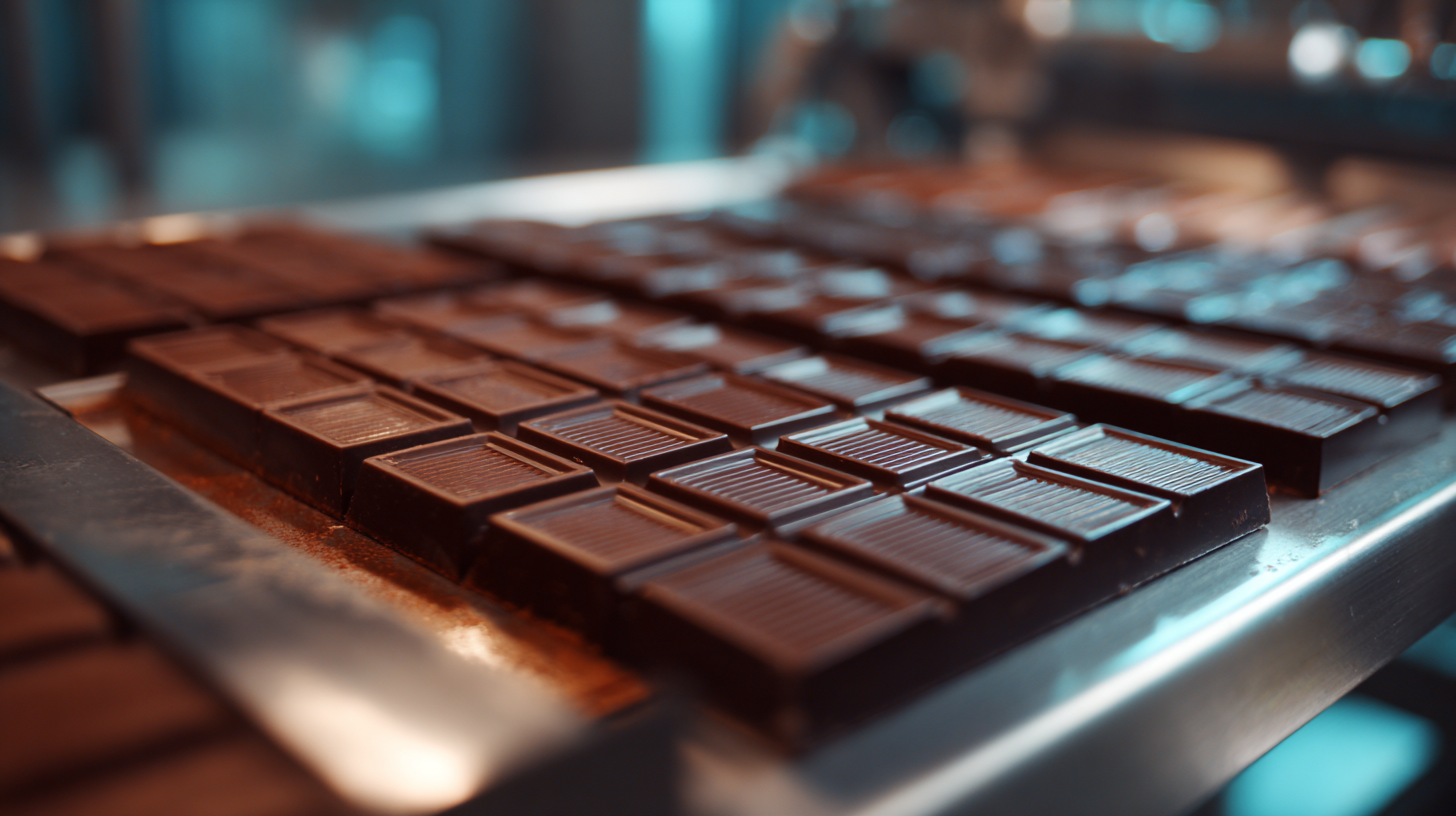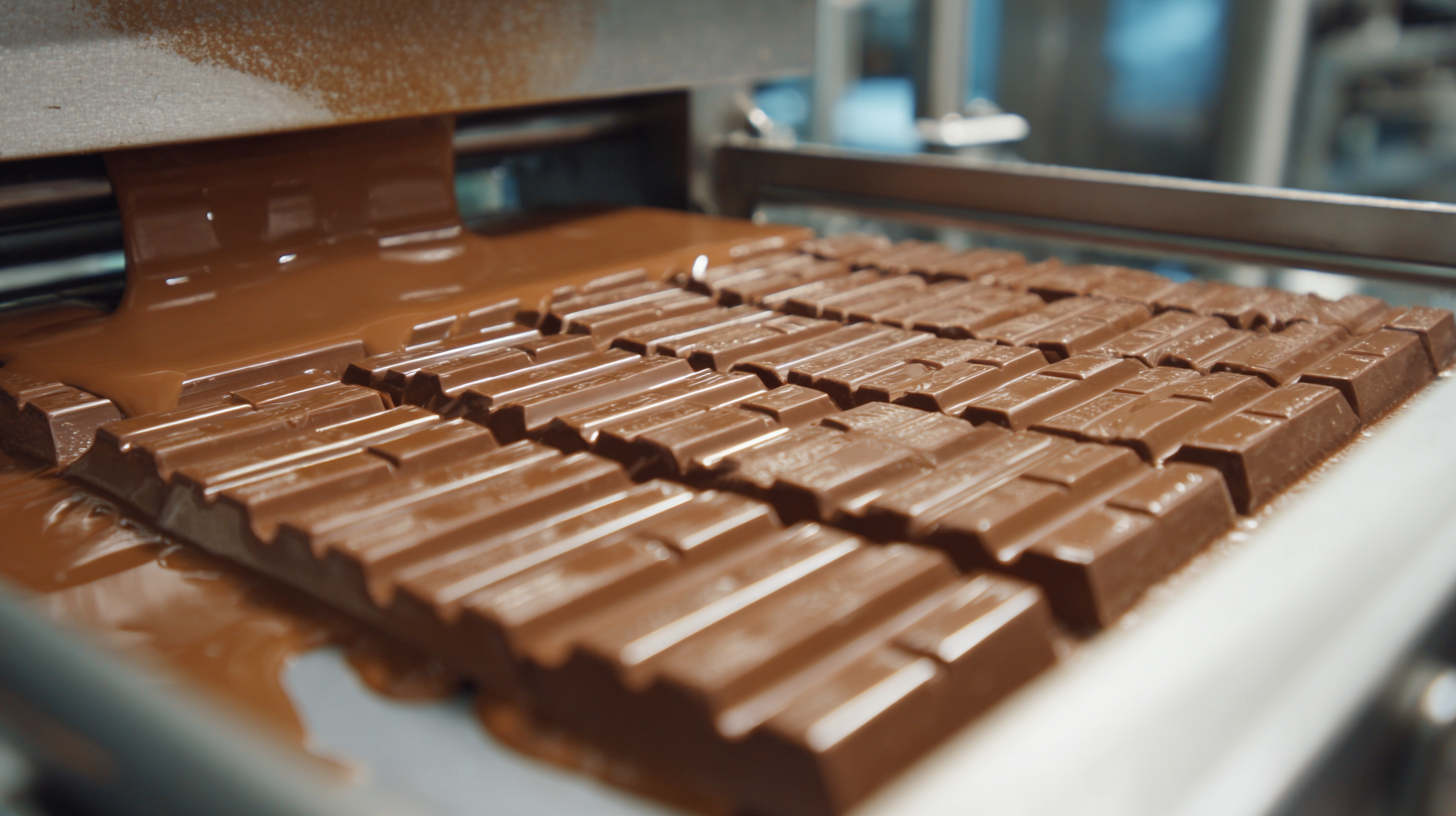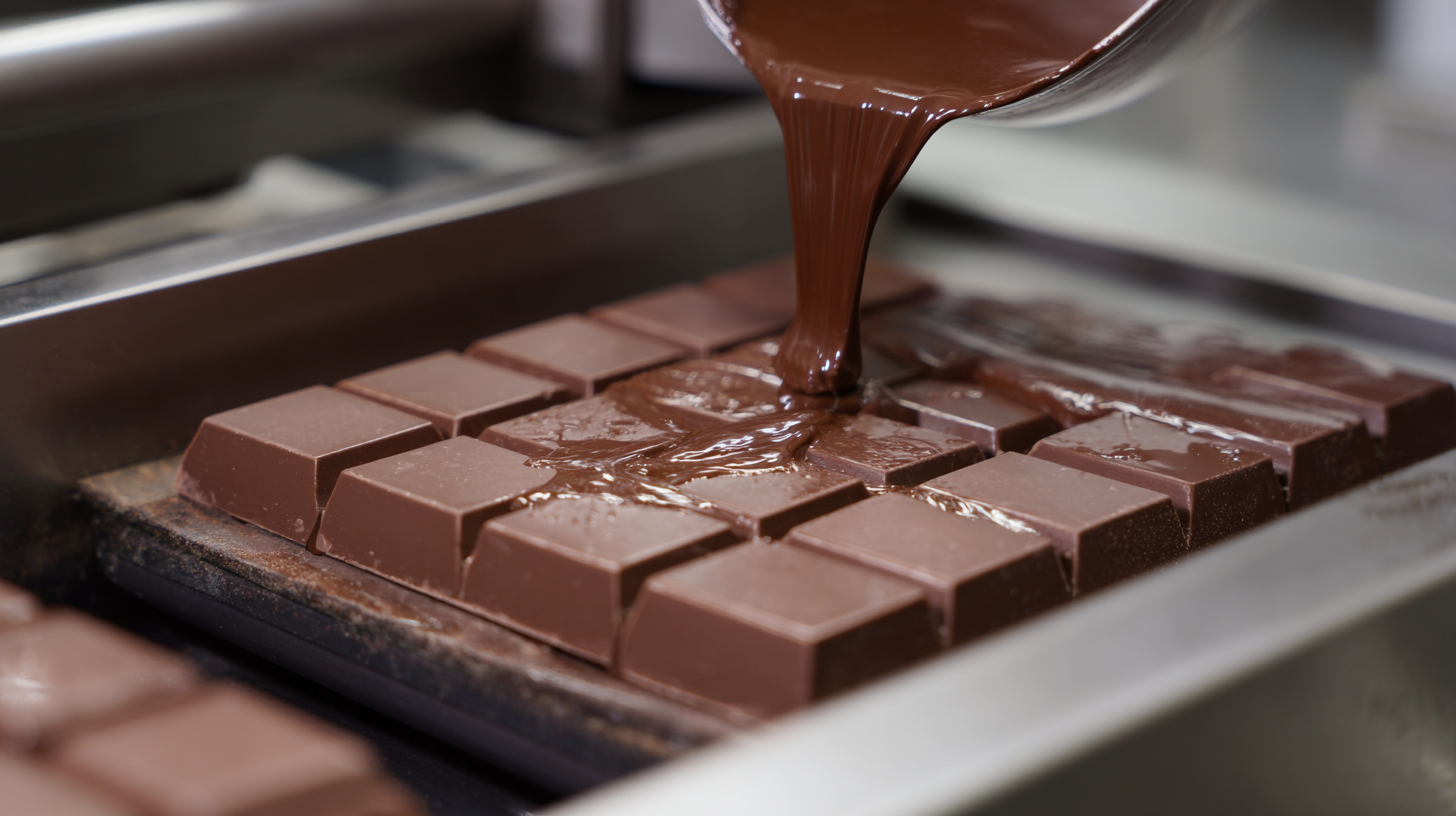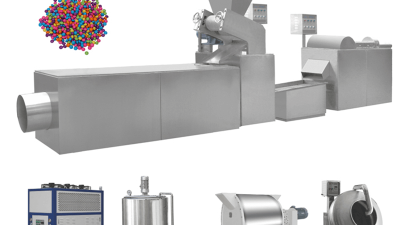Industry Applications of Best Chocolate Bar Making Machine and Challenges in Production Efficiency
Table of Contents
- The Rise of Chocolate Bar Production: A Global Industry Overview
- Innovative Features of Modern Chocolate Bar Making Machines
- Challenges in Achieving Production Efficiency in Chocolate Manufacturing
- Comparative Analysis of Traditional vs. Automated Chocolate Production
- Quality Control Measures for Exceptional Chocolate Bar Production
- Optimizing Production with Cutting-Edge Chocolate Bean Forming Machines: A Guide to Efficient Manufacturing Lines
- FAQS
- Related Posts
You know, the confectionery world is always changing, and lately, the craving for top-notch chocolates just keeps growing. By 2028, experts say the global chocolate market could hit around $202 billion, climbing at roughly 6.2% annually. To keep up with all that, manufacturers are really leaning on new tech—like the trusty Chocolate Bar Making Machine—which helps speed things up and keeps the quality consistent. Companies like Guangdong Bochuan Machinery are big players here, constantly pushing the envelope with innovative candy and food packing machines—they're always updating their tech to match what the market and customers want. Still, there are some hurdles—things like keeping equipment running smoothly, cutting down on waste, and making sure everything meets food safety standards. In this blog, I’ll walk you through how these machines are used across the industry and highlight some of the big challenges manufacturers face if they want to get production just right.

The Rise of Chocolate Bar Production: A Global Industry Overview
You know, the global
chocolate bar industry
has really taken off over the last few decades. It’s fueled by more and more folks craving sweets, along with some pretty creative new flavors and a growing interest in healthier options. The industry’s not just sticking to old markets anymore either—it's spreading fast into
emerging economies, where people's love for chocolate is definitely growing. Today, chocolate bars are more than just a quick snack; they’ve become something of a
cultural movement, offering all kinds of ingredients to suit a wide range of tastes all around the world.
Of course, with all this booming growth, producers face some real challenges that can make things a bit tricky in terms of keeping production smooth. Things like sourcing quality ingredients, the condition of machinery, and labor costs are all
big factors that matter. Luckily, the advent of modern chocolate-making machines has been a
game-changer—making production faster without sacrificing quality. That said, they also have to deal with ups and downs in cocoa prices and
stricter food safety rules, which can put a damper on growth. Finding that sweet spot between innovating and staying efficient is pretty much the name of the game if they want to keep riding this
upward wave in such a competitive scene.
Innovative Features of Modern Chocolate Bar Making Machines
These days, modern chocolate bar making machines have totally changed the game. They've got cool new features that make everything run smoother and keep the quality top-notch. One of the coolest parts? The smart tech built right in, which lets operators monitor the process in real-time and tweak things on the fly. It’s pretty awesome because it cuts down on waste and makes sure each batch of chocolate is just right—keeping things consistent and high quality. The automation of mixing, molding, and cooling has really knocked down labor costs and boosted production speed, so companies can keep up with the rising demand from chocolate lovers everywhere.
To get the most out of these high-tech machines, manufacturers really should invest in regular training for their teams—especially when new features roll out. It helps the staff work more efficiently and keeps safety standards in check. Also, staying on top of maintenance and updating the software keeps things running smoothly, preventing costly breakdowns and delays.
Another neat thing about these machines is their modular design. That means they’re super flexible—upgrades and adjustments are a breeze. So, if a company wants to try out a new chocolate recipe or switch up packaging, they can do it quickly without taking the whole line offline for ages. Partnering closely with equipment makers for customized solutions can also give a boost in efficiency, helping businesses stay competitive in the ever-evolving world of chocolate making.
Challenges in Achieving Production Efficiency in Chocolate Manufacturing
You know, when it comes to making chocolate, hitting that sweet spot of efficiency isn’t exactly a walk in the park. Companies are juggling a lot — trying to keep up with growing customer cravings, all while keeping costs under control. That’s why a bunch of them are turning to smarter machinery and better ingredient management. Looking ahead, the market for things like cocoa beans, lecithin, sugar, and vanilla is expected to hit around $120 billion by 2032, growing at roughly 2.6% each year from 2024 onward. That’s a solid sign that innovation’s more important than ever.
Automation and digital tech are really changing the game, too. Top players are jumping on the bandwagon, using new tools to make things more transparent and efficient. For example, AI and robots are not just making sure the chocolate’s top quality but also helping predict maintenance needs before things break down — saving everyone a headache. Plus, there's this cool approach of recycling cocoa pod leftovers, which boosts both nutrition and sustainability.
It’s a smart move that tackles environmental and social issues tied to traditional cocoa farming. By embracing these new ideas head-on, manufacturers are setting themselves up to stay competitive in this rapidly evolving market. And honestly, that’s what it’s all about — staying ahead and making better chocolate for everyone.
Comparative Analysis of Traditional vs. Automated Chocolate Production
You know, the chocolate industry has really been going through some big changes lately. Gone are the days where everything was done by hand; now, automation is taking over, and it’s definitely making a difference—not just in how fast things get done, but also in how consistent the products are. I came across this report from Grand View Research, and it said that back in 2021, the global chocolate market was worth around $130 billion. And get this—it's expected to keep growing at about 4.5% annually from 2022 all the way through 2030. No surprise, then, that producers are scrambling to keep up with the demand. That’s where these high-tech automated chocolate bar machines are coming in—they're really changing the game.

Now, if we look back, making chocolate was pretty labor-intensive and could sometimes lead to some inconsistency in quality, which isn’t ideal. But with automation, things are starting to look a lot better—production gets more efficient, errors are minimized, and they can produce way more stuff in less time. For instance, one study I read from Market Research Future mentioned that automated lines could boost output by up to 30% compared to doing everything manually. Of course, it’s not all smooth sailing—these machines come with a hefty price tag upfront, and you need folks who know their way around this tech to keep everything running smoothly. It’s all about balancing these factors, especially if you want your chocolate to stay competitive and meet consumers’ growing appetite for high-quality treats.
Quality Control Measures for Exceptional Chocolate Bar Production
When it comes to making those delicious chocolate bars, quality control really isn’t something to overlook. It’s all about making sure every single piece hits the mark in taste, texture, and how it looks. Putting in place some solid quality checks—not just once, but throughout the whole process—really pays off. It helps keep things consistent, catches problems early on, and honestly, it makes customers way happier. From sourcing the raw ingredients to packing up the final product, keeping an eye on quality at every step is pretty much key.

A good tip? Create a simple, standardized checklist for quality checks—things like cocoa content, sugar levels, and how the texture feels. This way, you can easily spot if something’s off before it hits the shelves.
And let’s be real—technology can be a game-changer here. Automated inspection systems, for example, can scan each chocolate bar for quality issues super quickly. They help cut down on human errors and keep the production line moving smoothly. Plus, with the right software that ties into your line, you can monitor quality metrics in real time. That means you get instant feedback and can make quick adjustments, which cuts down on waste and keeps the quality high before the bars even reach your customers.
So, investing in good checks and tech isn’t just about catching flaws—it’s about making sure every chocolate bar you produce is top-notch, every single time.
Optimizing Production with Cutting-Edge Chocolate Bean Forming Machines: A Guide to Efficient Manufacturing Lines
In the ever-evolving landscape of chocolate manufacturing, optimizing production processes has become a cornerstone for achieving efficiency and quality. With the advent of cutting-edge chocolate bean forming machines, manufacturers can now streamline operations and elevate the quality of their products. These innovations offer two distinct methods of chocolate production: one utilizing powder chocolate forming and the other leveraging liquid chocolate forming. This versatility allows for customization based on specific product requirements and market demands.
A comprehensive chocolate production line comprises essential equipment such as conches, holding tanks, crushing machines, and vibration sieves, culminating in advanced forming machines. The integration of these technologies not only enhances the consistency and flavor profile of the chocolate but also significantly reduces production time and labor costs. By investing in these state-of-the-art machines, manufacturers are not only ensuring a smoother production flow but also positioning themselves to meet the growing consumer appetite for high-quality chocolate products efficiently. The future of chocolate manufacturing lies in these innovations, ensuring that producers remain competitive while maintaining the exceptional quality that chocolate lovers desire.
FAQS
: Traditional chocolate production is often labor-intensive, leading to variability in product quality, while automated processes enhance efficiency, reduce human error, and increase throughput by up to 30%.
The global chocolate market is expected to grow at a CAGR of 4.5% from 2022 to 2030, necessitating production approaches that can keep pace with increasing consumer demand for high-quality products.
Manufacturers may encounter challenges such as high initial capital investment and the need for skilled personnel to operate complex automated systems.
Effective quality control measures are essential for ensuring that chocolate products meet high standards of taste, texture, and appearance, enhancing customer satisfaction and brand reputation.
Establishing a standardized quality control checklist and conducting regular checks throughout the production process are crucial for maintaining consistency and identifying defects early.
Investing in advanced technology like automated inspection systems can improve production efficiency by quickly analyzing product quality, reducing human error, and speeding up the production process.
Manufacturers should consider integrating software solutions that track quality metrics in real-time to allow for immediate adjustments and reduction of waste.
By increasing efficiency and maintaining product consistency, automated production helps manufacturers meet consumer demand and thrive amidst competition.
Skilled personnel are essential for operating sophisticated machinery, ensuring that automated processes run smoothly and effectively.
Implementing a quality checklist that includes parameters like cocoa content and texture can help identify deviations from standards more effectively.
Related Posts
-

Unmatched Quality in Chocolate Bar Production from China's Leading Factory
-

The Future of Innovative Production with Best Hard Candy Maker Machine
-

Essential Tips for Sourcing the Best Small Hard Candy Making Machines: A Comparative Guide to Manufacturers
-

Unmatched Quality in Sealing Technology From China's Trusted Manufacturers
-

How to Choose the Best Amla Candy Making Machine for Your Business
-

Advantages of Best Peanut Candy Making Machine for Global Buyers

